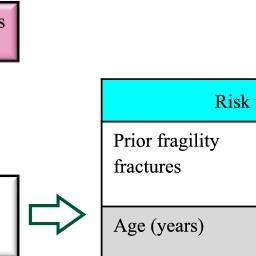Glucocorticoid-induced osteoporosis (GIOP) is a common and serious side effect of long-term glucocorticoid (GC) therapy, which is used to treat a variety of conditions including autoimmune diseases. GCs, while effective for controlling inflammation, significantly weaken bones, leading to a higher risk of fractures. The 2023 guidelines for managing and treating GIOP, published by the Journal of Bone and Mineral Metabolism, offer updated recommendations based on the latest evidence to help clinicians prevent and manage this debilitating condition.

Figure 1: The 2023 Guidelines for the Management and Treatment of Glucocorticoid-induced Osteoporosis published by the Japanese Society for Bone and Mineral Research. BMD bone mineral density, GC glucocorticoid, PSL prednisolone, YAM young adult means
Why GIOP Matters
GIOP affects 0.7–1.2% of adults worldwide and accounts for 25% of adverse reactions to GC therapy. Patients taking GCs for more than three months are at significant risk of developing osteoporosis, with fractures occurring in 30-50% of these patients. Fractures not only decrease quality of life but also contribute to higher morbidity and healthcare costs. Even at low doses, GCs accelerate bone loss by inhibiting osteoblast function and promoting osteoclast activity, leading to rapid reductions in bone density.
Key Recommendations
The 2023 guidelines emphasize early intervention to prevent fractures in patients starting GC therapy. Bisphosphonates, such as alendronate and risedronate, are recommended as first-line therapies for patients receiving long-term GC treatment. These medications have been shown to increase bone mineral density (BMD) in both the lumbar spine and femur and prevent both vertebral and non-vertebral fractures.
For patients at high risk of fractures, including those with previous fractures or very low BMD, other options such as the anti-RANKL antibody denosumab or teriparatide (a parathyroid hormone receptor agonist) are recommended. Active vitamin D analogs like eldecalcitol are also recommended to increase BMD and prevent fractures, particularly in elderly patients or those with limited mobility.
The guidelines recommend regular monitoring of BMD using dual-energy X-ray absorptiometry (DEXA) scans, especially in the lumbar spine and femur. This should be done at the start of GC therapy and repeated every 6-12 months depending on the patient’s risk factors. Additionally, lifestyle interventions, including adequate calcium and vitamin D intake, as well as weight-bearing exercises, are strongly advised to support bone health.
Risk Factors and Special Considerations
The risk factors for developing GIOP include advanced age, high GC doses, and low baseline BMD. The guidelines also caution against the use of GCs in high doses or for prolonged periods, recommending that the lowest effective dose be used to manage the underlying condition.
For special populations such as postmenopausal women and elderly patients, the guidelines emphasize the need for a tailored approach, considering both fracture risk and potential side effects of osteoporosis treatments. Pregnant women should avoid bisphosphonates, anti-RANKL antibodies, and parathyroid hormone receptor agonists due to potential risks to the fetus.
The 2023 guidelines for GIOP offer a comprehensive, evidence-based approach to managing the condition, emphasizing early intervention and regular monitoring to prevent fractures. By using a combination of pharmacological and lifestyle interventions, clinicians can significantly reduce the risk of osteoporosis and improve the quality of life for patients on long-term GC therapy.
Journal Article: Satoshi Soen. “The 2023 Guidelines for the Management and Treatment of Glucocorticoid-Induced Osteoporosis.” Journal of Bone and Mineral Metabolism.
Summary by Faith Oluwamakinde










